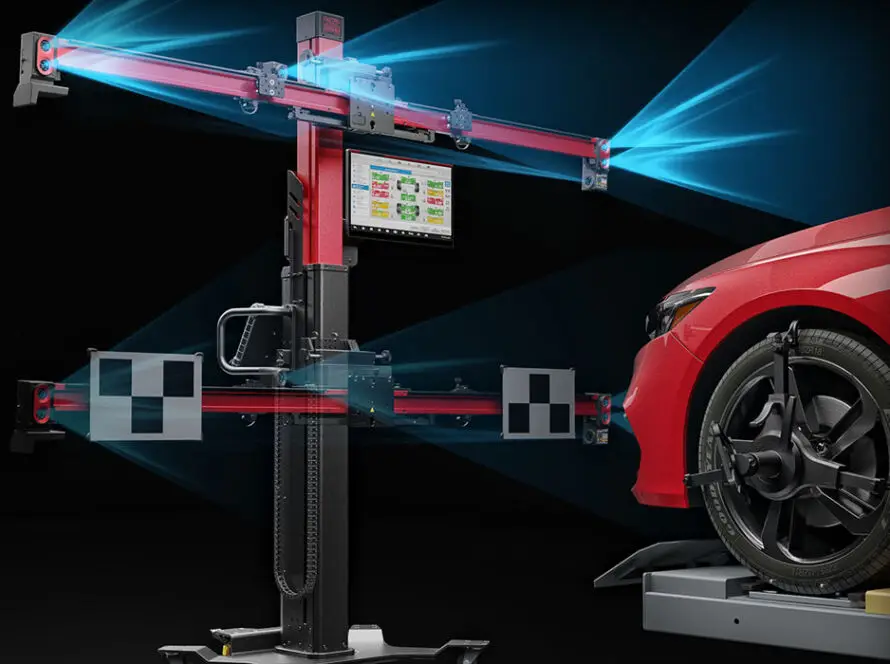Advanced Driver Assistance Systems (ADAS) are revolutionizing vehicle safety, providing features that help prevent accidents and enhance driving efficiency. These systems rely on sensors, cameras, and radar to function correctly. However, if an ADAS-equipped vehicle undergoes repairs, windshield replacements, or significant maintenance work, the system must be recalibrated to ensure accuracy. Failing to calibrate ADAS can lead to severe risks, including increased accident potential, legal liabilities, and higher repair costs. Below, we explore the dangers associated with neglecting ADAS calibration and why it is crucial for driver safety and compliance.
1. Reduced System Accuracy
ADAS components such as lane departure warning systems, adaptive cruise control, and collision avoidance depend on precise calibration to function correctly. Even a minor misalignment can cause:
-
Lane departure warnings to activate incorrectly or fail to detect road markings.
-
Adaptive cruise control to misjudge the distance between vehicles, leading to potential collisions.
-
Blind-spot monitoring systems to overlook vehicles or falsely alert drivers.
These inaccuracies can create confusion for the driver, making them distrust ADAS alerts or, worse, leading to accidents.
2. Increased Risk of Accidents
One of the most severe consequences of skipping ADAS calibration is an increased likelihood of accidents. Incorrect sensor alignment means that safety features may not work when needed, leading to:
-
Delayed braking response in emergency situations.
-
Failure to detect pedestrians, cyclists, or other vehicles.
-
Malfunctioning cross-traffic alerts, resulting in side-impact or rear-end collisions.
With ADAS playing a crucial role in accident prevention, failing to maintain its accuracy can significantly compromise road safety.
3. Legal and Insurance Complications
Many insurance companies and vehicle manufacturers require proper ADAS calibration as part of vehicle maintenance. Neglecting calibration can result in:
-
Insurance claims being denied due to non-compliance with safety regulations.
-
Potential liability in accidents where faulty ADAS is determined to be a contributing factor.
-
Legal consequences if an improperly calibrated system leads to injury or property damage.
Ensuring that ADAS is calibrated correctly helps drivers avoid financial and legal complications in the event of an accident.
4. Higher Long-Term Costs
While skipping ADAS calibration might seem like a way to save money initially, it can lead to higher expenses over time. Issues stemming from an improperly calibrated system can result in:
-
Additional repair costs if malfunctioning ADAS components cause accidents.
-
Increased insurance premiums due to preventable incidents.
-
The need for frequent recalibrations if the issue is not addressed correctly the first time.
Proper calibration helps avoid these unnecessary expenses by maintaining system functionality from the outset.
5. Compromised Driver Confidence
Drivers who rely on ADAS expect it to function accurately. When calibration is ignored, system errors and inconsistencies can lead to:
-
A false sense of security, causing drivers to place unwarranted trust in faulty alerts.
-
Distrust in the system, resulting in the driver ignoring critical warnings.
-
Increased stress and anxiety behind the wheel due to unreliable assistance.
Maintaining proper calibration ensures that drivers can confidently use ADAS features as intended.
6. Impact on Resale Value
Vehicles with uncalibrated ADAS may suffer a reduction in resale value due to:
-
Safety concerns raised by potential buyers.
-
Diagnostic reports indicating unresolved ADAS issues.
-
Higher repair costs for the new owner, making the vehicle less attractive in the used car market.
A properly calibrated ADAS ensures that the vehicle retains its value and remains competitive in the resale market.
7. Compliance with Manufacturer Guidelines
Most vehicle manufacturers provide strict guidelines for ADAS calibration, especially after repairs or windshield replacements. Failure to adhere to these standards can:
-
Void the vehicle’s warranty, leaving the owner responsible for any repair costs.
-
Lead to non-compliance with state or federal regulations concerning vehicle safety.
-
Prevent proper software updates and maintenance, reducing system effectiveness over time.
By following manufacturer-recommended calibration procedures, drivers can ensure their vehicle remains in compliance and functions optimally.
8. Safety of Passengers and Other Road Users
ADAS is designed not only to protect the driver but also passengers, pedestrians, and other vehicles on the road. Neglecting calibration puts everyone at risk, leading to:
-
Increased likelihood of collisions involving pedestrians and cyclists.
-
Higher chances of side-impact or rear-end accidents due to incorrect sensor readings.
-
Inability to assist with accident avoidance, leading to preventable injuries and fatalities.
Ensuring proper calibration contributes to overall road safety and prevents tragic accidents.
9. Advanced Technology Requires Precision
ADAS relies on a combination of sophisticated technology, including LiDAR, radar, cameras, and sensors. These components require precise calibration to function effectively. When they are misaligned, even by a fraction of a degree, the entire system’s performance can be compromised. This is especially critical for:
-
Self-parking features that rely on accurate distance measurements.
-
Night vision systems that detect objects in low-light conditions.
-
Traffic sign recognition systems that need clear and correctly positioned camera inputs.
Precision calibration ensures that the vehicle operates as intended and maximizes the benefits of ADAS technology.
Conclusion
Failing to calibrate ADAS poses numerous risks, from increased accident potential to legal liabilities and financial setbacks. Proper calibration is essential for maintaining the accuracy, reliability, and effectiveness of these advanced safety systems. By ensuring ADAS is correctly adjusted after any repair or maintenance work, drivers can protect themselves, their passengers, and others on the road. Investing in regular ADAS calibration not only enhances safety but also preserves vehicle value and ensures compliance with manufacturer and insurance requirements. When it comes to ADAS, precision and regular maintenance are non-negotiable for responsible vehicle ownership.




